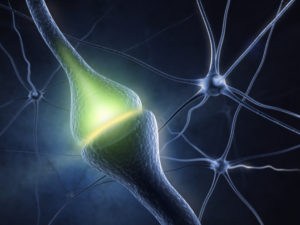New Human Neuron Core to analyze ‘disease in a dish’

Last week was a good week for neuroscience. Boston Children’s Hospital received nearly $2.2 million from the Massachusetts Life Sciences Center (MLSC) to create a Human Neuron Core. The facility will allow researchers at Boston Children’s and beyond to study neurodevelopmental, psychiatric and neurological disorders directly in living, functioning neurons made from patients with these disorders.
“Nobody’s tried to make human neurons available in a core facility like this before,” says Robin Kleiman, PhD, Director of Preclinical Research for Boston Children’s Translational Neuroscience Center (TNC), who will oversee the Core along with neurologist and TNC director Mustafa Sahin, MD, PhD, and Clifford Woolf, PhD, of Boston Children’s F.M. Kirby Neurobiology Center. “Neurons are really complicated, and there are many different subtypes. Coming up with standard operating procedures for making each type of neuron reproducibly is labor-intensive and expensive.”
Patient-derived neurons are ideal for modeling disease and for preclinical screening of potential drug candidates, including existing, FDA-approved drugs. Created from induced pluripotent stem cells (iPSCs) made from a small skin sample, the lab-created human neurons capture disease physiology at the cellular level in a way that neurons from rats or mice cannot.
“The new Core is a way to bring this technology to clinicians who don’t have basic research labs, and let them test hypotheses using human neurons that they might not otherwise be able to access,” says Kleiman.

Already, the Woolf lab, together with researchers at the Harvard Stem Cell Institute, have shown that the FDA-approved drug retigabine (ezogabine) reverses the hyperexcitability of spinal motor neurons from patients with amyotrophic lateral sclerosis (ALS), leading to a clinical trial at Massachusetts General Hospital. The same team has developed a technique to create pain-sensing, or nociceptive, neurons from patient samples. The neurons are helping reveal mechanisms of inflammatory pain hypersensitivity and chemotherapy-induced neuropathy, and will soon be used to screen panels of potential drugs.
Boston Children’s clinicians are especially interested in modeling and drug discovery for their patients with neurodevelopmental disorders, starting with those with known genetic causes.
- The Sahin lab is using neurons derived from patients with tuberous sclerosis complex (TSC), a rare condition often linked to autism, to test various compounds that might reverse the underlying disease pathology. In this case, mutations in TSC genes lead to over-activation of mTOR signaling and cause neurons to grow multiple axons rather than just one. “You can look for predicted phenotypes in a cell when you know the affected pathway,” explains Kleiman.
- Philip Pearl, MD, director of the Epilepsy Center, hopes to partner with the Core to study a rare genetic metabolic epilepsy known as succinic semialdehyde dehydrogenase deficiency (SSADHD) and screen drug candidates.
- Joseph Gonzalez-Heydrich, MD, in the Department of Psychiatry has begun working with the Core to create iPSC lines derived from children with early-onset psychosis, a condition often associated with extra or deleted segments of DNA known as copy number variants or CNVs. In the Core, researchers will be able to create neurons from the iPSCs and investigate how the CNVs altered the children’s neuronal development—then search for compounds that normalize this pathology.
The Core will partner closely with the Harvard Stem Cell Institute and the Children’s Center for Cell Therapy, and is already in talks with a number of pharmaceutical companies interested in partnering with the hospital. Parents of children with rare diseases have also expressed interest. Increasingly, parents are banding together and helping organize and fund research efforts.
“One of the reasons the MLSC was very keen on this proposal is its potential to stimulate a lot of academia-industry collaborations,” says Kleiman. “Pharmaceutical companies have reduced their R&D footprint in the neurosciences, especially for technically difficult ventures like stem cell biology, and they don’t have access to patients. This Core facility is a great opportunity to develop collaborative research projects to pursue new therapies for neurodevelopmental disorders.”
Related Posts :
-

The hidden burden of solitude: How social withdrawal influences the adolescent brain
Adolescence is a period of social reorientation: a shift from a world centered on parents and family to one shaped ...
-

The journey to a treatment for hereditary spastic paraplegia
In 2016, Darius Ebrahimi-Fakhari, MD, PhD, then a neurology fellow at Boston Children’s Hospital, met two little girls with spasticity ...
-

New research shows caregiver instability affects development
According to some estimates, more than 100 million children around the world experience separations from their caregiver every year. Previous research — ...
-

New research paves the way to a better understanding of telomeres
Much the way the caps on the ends of a shoelace prevent it from fraying, telomeres — regions of repetitive DNA ...





